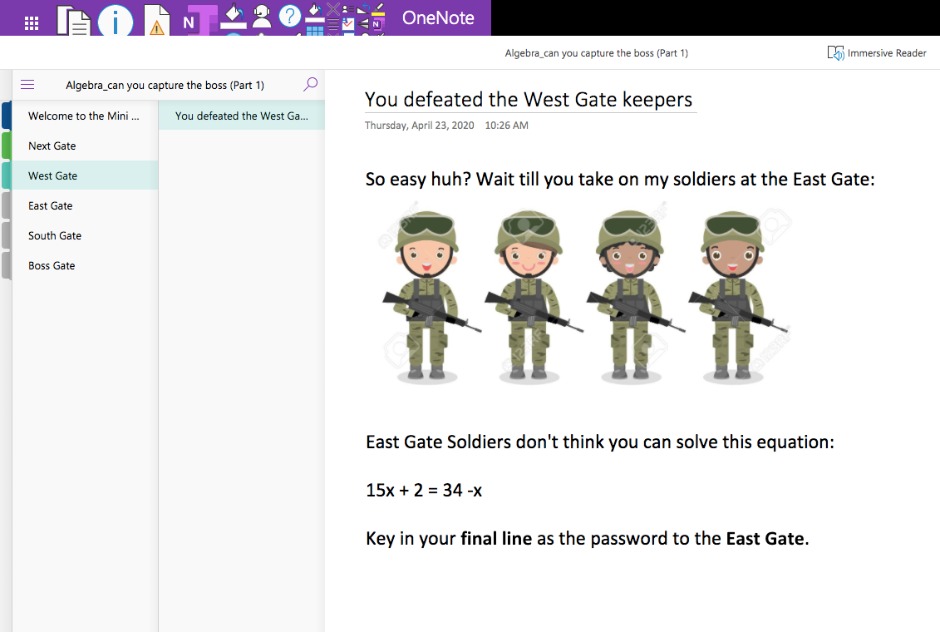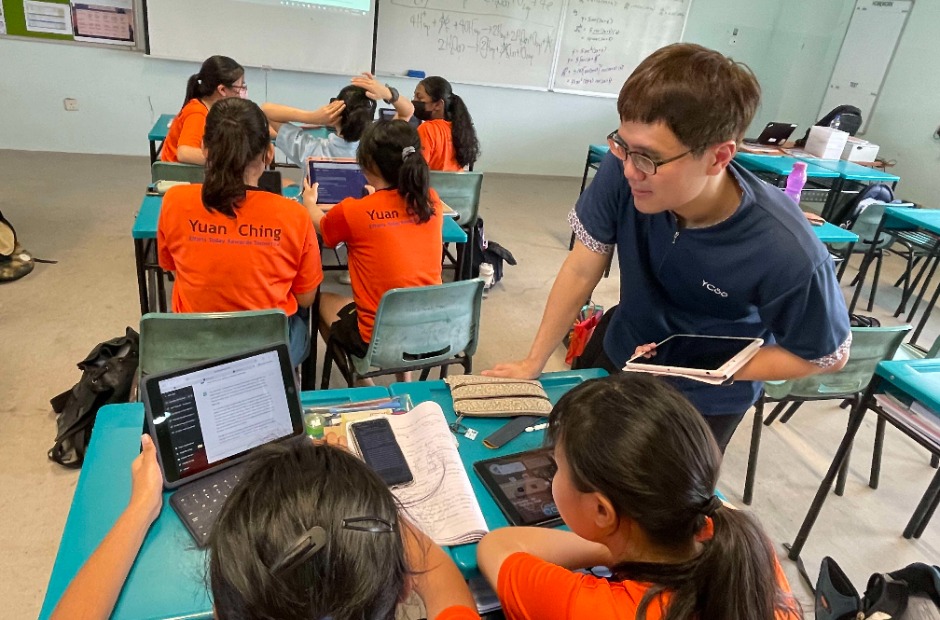First Person: Game to Try
09 Oct 2020
.jpg)
It doesn’t take fancy graphics or complex gameplay to make students excited about learning. Mr Jeremy Lim from Admiralty Secondary School explains why, he thinks, a simple game can be just as effective to motivate students to learn.
Students today are spoilt for choice when it comes to games. Their mobile phones alone offer them a wide range of titles. From combat to role-playing, arcade or puzzle games – there is something for everyone at all budgets.
So how can teachers hope to engage students with games of our own design – when they are exposed to games with stunning graphics and effects every day?
That was a question I was keen to explore during the period of Home-Based Learning (HBL) this year.
The appeal of games
Ever since my teacher training days, I have been interested in games and their use in education.
When HBL was announced this year, I was determined to seize this opportunity to experiment using games to support learning. I thought that in such uncertain times, it is all the more important that we infuse an element of fun while learning. It was easier to implement the games online too.
In designing the games, I was inspired by what other teachers shared. During Full HBL in April, the fraternity came together and shared their lessons and resources online. One popular idea was that of virtual “escape rooms”, where students solve puzzles to proceed from one level to the next and uncover a story as the game progresses.
These “escape rooms” can be designed using a variety of online applications, but I chose to go with Microsoft OneNote as it was a platform that my students are familiar with.
‘Can you capture the boss?’
The first game I experimented with was simple. It was titled “Can you capture the boss?”
Who is this ‘boss’ and why do you need to capture him? I agonised over the storyline for a while before I decided to leave it a mystery. I am a Math teacher after all, not a professional game developer!
The game came at the end of a chapter on algebra during HBL and was meant for my Secondary 1s to test their understanding of the topic. At each stage of the game, they had to solve an algebraic equation to “unlock” a gate and apprehend the enigmatic boss. Unfortunately, as the students discovered, the boss was too quick for them and slipped out of their grasp at every step.

To motivate the class, I framed the game as a mini competition. We started the game together after our Math ‘live’ lesson and those who completed the game first had their names up on a virtual leaderboard.
Even though my game was simple and there were no prizes, the students loved it.
In the feedback form, they asked to do this again. Some said that it was “tough but fun”. One student even wrote, “Fun, but we haven’t caught this boss. I want to catch him and be the next sheriff in town.”
They were clearly able to fill in any gaps in the story with their own imagination.
The Personal Touch
The success of the first game motivated me to design more of such activities for the students. Even as we headed back to school in June, I continued to use games to consolidate the students’ learning. I shared the games with the older students for revision, and they were well-received there, too.
I also inserted characters from popular culture, such as Star Wars, into the escape rooms. Once, for an International Friendship Day activity, I wove in the members of a popular Korean Pop band into the storyline and the students had to find clues from specific news articles to solve a mystery. I have never seen some of the girls so thrilled.
So what was it about these games that captured the students’ attention?
I think it boils down to the sense of connection between the students and the teacher.
There were no fancy graphics or effects; one may even call this a Math exercise disguised as a game. But the students appreciated how their teacher had tried to appeal to their interests. Some were tickled by the little jokes I included, and some liked that I included a clip from Queen’s ‘We Are the Champions’ in the last stage of the game – because that was their favourite song, too.
I realised that my students are motivated because they know I care about them and their interests and hobbies, and not just their grades.
The other reason is social. We had a class chat group and it would buzz with excitement every time a game was launched. Students would share their progress, ask for hints, or joke about the story together. It’s something to share with your friends.
Technology and Blended Learning
Schools will continue with a blend of online self-directed learning and face-to-face lessons after COVID-19. I believe this will help us save time in class and provide opportunities to teach in new ways.
While some teachers are worried about going online, I believe that it doesn’t need to involve sophisticated technology. Simple everyday digital tools can be effective too.
To engage my Secondary 4 Normal (Technical) students during the school holidays, I used a messaging application to send them a Math question every day that they could solve and reply to me directly on their mobiles. To entice them, I designed an e-poster and framed this as a special subscription service that they could sign up for. I was delighted that 14 out of the class of 18 took this up. This was not a new or special technology – but it motivated them where a more formal lesson may not.
.jpg)
Appealing to the human love for good deals with my Telegram-based Math “subscription plan”
Of course, a certain level of competence and familiarity with online tools is required to plan an effective lesson – and here is where having a community of teachers working together and supporting one another will help. However, the teachers’ knowledge of and relationship with their class is what makes the lesson, or game, special for their students.
After all, most of our students are used to having the most advanced games and software at the tips of their fingers. But a teacher who understands them? That’s what counts.

.jpg)



